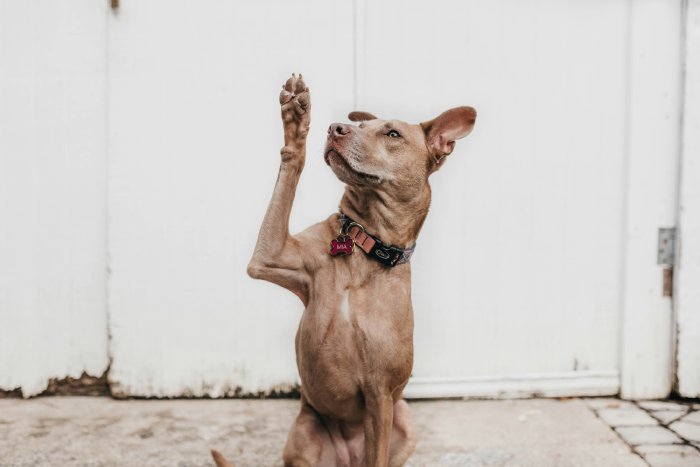Working On Recall
Teaching your puppy recall, or to come when called, is a crucial skill for their safety and your peace of mind.
But keep in mind the most important mantra: if your puppy doesn’t recall 100% of the time, they’re not meant to be off leash.
Always be respectful of other dogs and owners and remember, even if your dog is trained, the other might not be.
Here’s a step-by-step guide to effectively teach your puppy this vital command.

Step 1: Choose Your Command Word
- Be Specific: Select a clear, distinct word or phrase for the recall command, such as “Come” or “Here.” Avoid using the puppy’s name as the recall command, as their name should only get their attention.
- Consistency is Key: Ensure everyone in the household uses the same command to avoid confusing the puppy.
Step 2: Start in a Distraction-Free Environment
- Quiet Space: Begin training in a quiet, enclosed area where there are few distractions. This could be indoors, like a hallway or a room.
- Focus: Make sure you have your puppy’s attention before you start the training session.
Step 3: Use High-Value Treats
- Irresistible Rewards: Use treats that your puppy loves and doesn’t get at other times. High-value treats will make the training more effective.
- Reward Size: Keep the treats small to avoid overfeeding, and ensure they are something your puppy can quickly consume.
Step 4: Introduce the Command
- Short Distance: Start by standing only a few feet away from your puppy.
- Command and Gesture: Clearly say your recall command and use a consistent hand gesture. You might extend your arm out and then sweep it toward your body.
Step 5: Praise and Reward
- Immediate Response: The moment your puppy starts to come toward you, begin to praise them enthusiastically.
- Reward Upon Arrival: Give your puppy the treat as soon as they reach you. This reinforces the behavior you want.
Step 6: Gradually Increase the Distance
- Small Increments: As your puppy becomes more reliable in coming when called, gradually increase the distance between you when you give the command.
- Practice Makes Perfect: Regular, short practice sessions are more effective than less frequent, longer sessions.
Step 7: Add Distractions Gradually
- Controlled Environment: Once your puppy is consistently responding in a quiet area, start adding mild distractions.
- Progress Slowly: Increase the level of distraction gradually, ensuring your puppy can succeed before making it more challenging.
Step 8: Practice in Different Locations
- New Environments: Practice the recall command in various environments, such as in your yard, at a park (on a long leash), or in other pet-friendly areas.
- Safety First: Always ensure your puppy is in a safe, enclosed area or on a leash when practicing in new environments.
Step 9: Reinforce and Reward Randomly
- Intermittent Reinforcement: Once your puppy is reliably responding to the recall command, start giving treats intermittently but continue to always offer praise.
- Surprise Rewards: Occasionally call your puppy to come when they aren’t expecting it and reward them. This keeps the behavior strong.
Step 10: Patience and Consistency
- Be Patient: Recall training takes time. Some puppies may pick it up quickly, while others may need more repetition.
- Consistency is Crucial: Consistently use the same command and reward system to avoid confusing your puppy.
Additional Tips:
- Never Punish: If your puppy comes to you, even if it’s after doing something they shouldn’t have, never punish them after a recall. You want “coming when called” to always be a positive experience.
- Use a Happy Tone: Always use a happy, encouraging tone of voice when giving the recall command. You want your puppy to want to come to you.
- End on a Positive Note: Finish each training session with a success, even if it means reducing the distance or distractions to ensure your puppy comes when called.
Recall is not just a trick; it’s a crucial command that can keep your puppy safe in potentially dangerous situations.
With patience, consistency, and positive reinforcement, you’ll build a reliable recall response in your puppy.